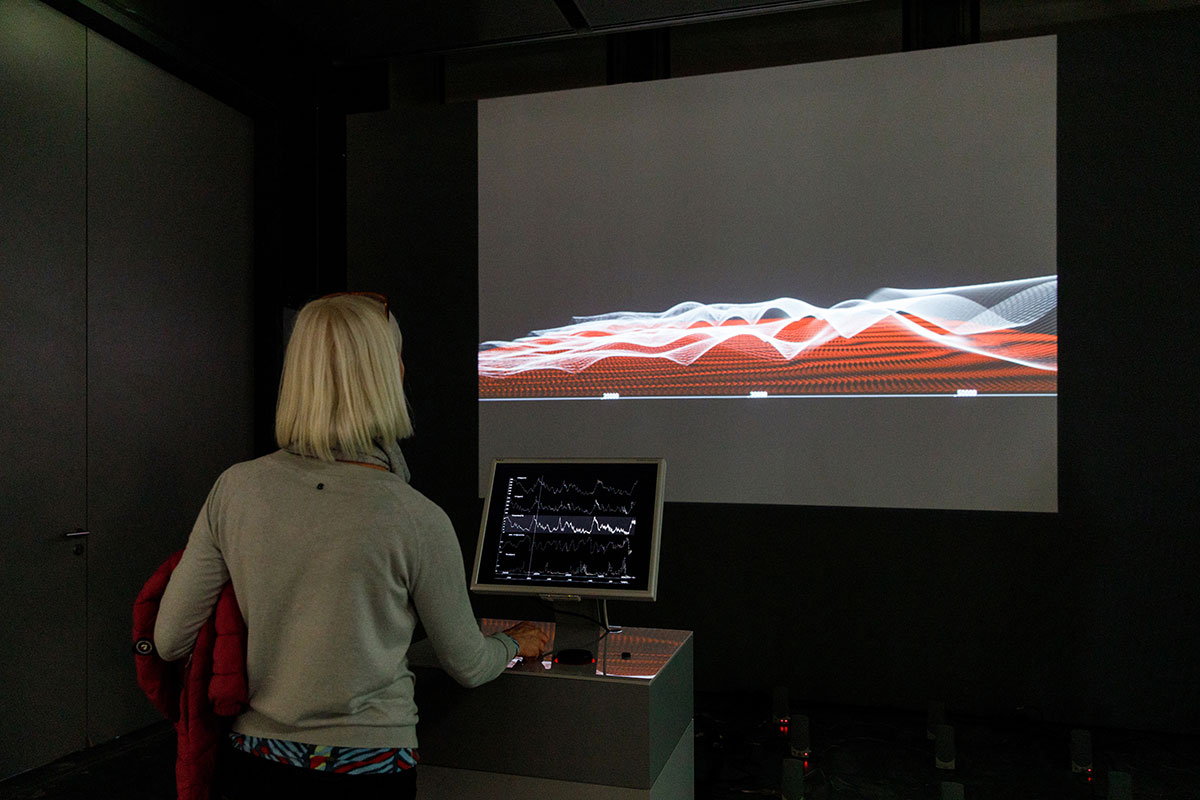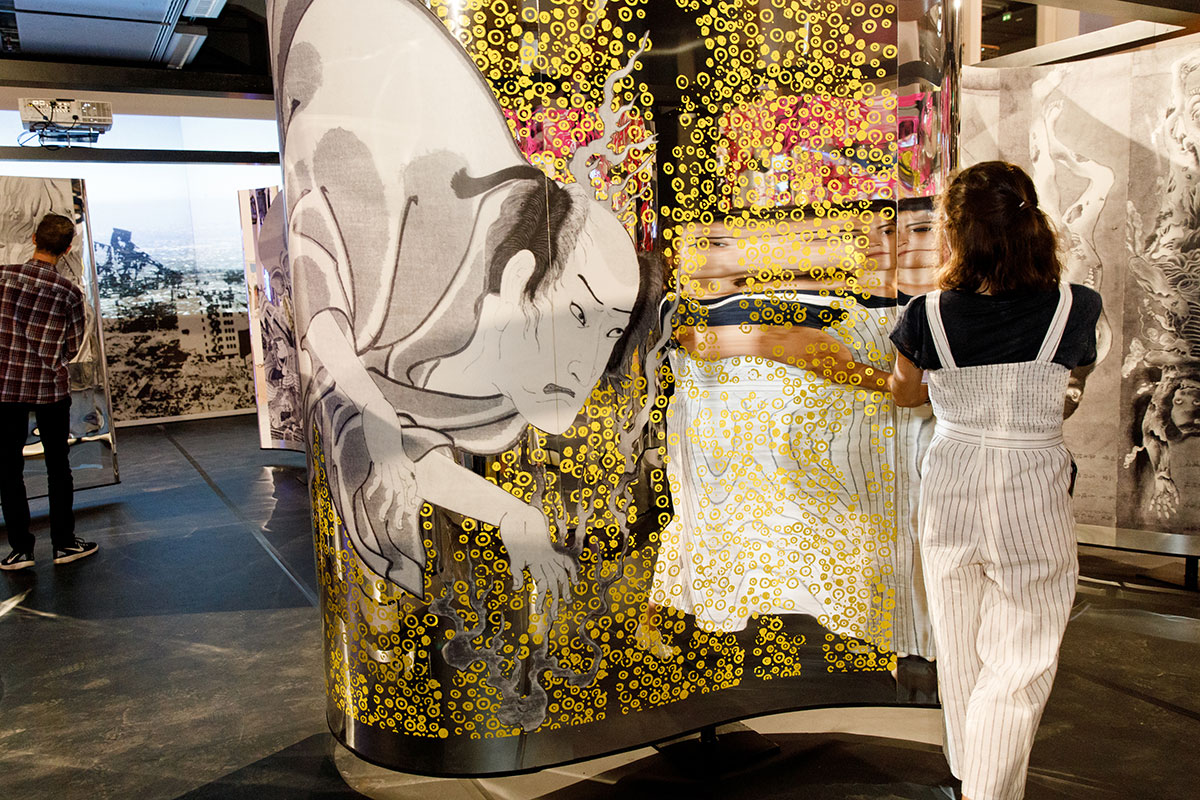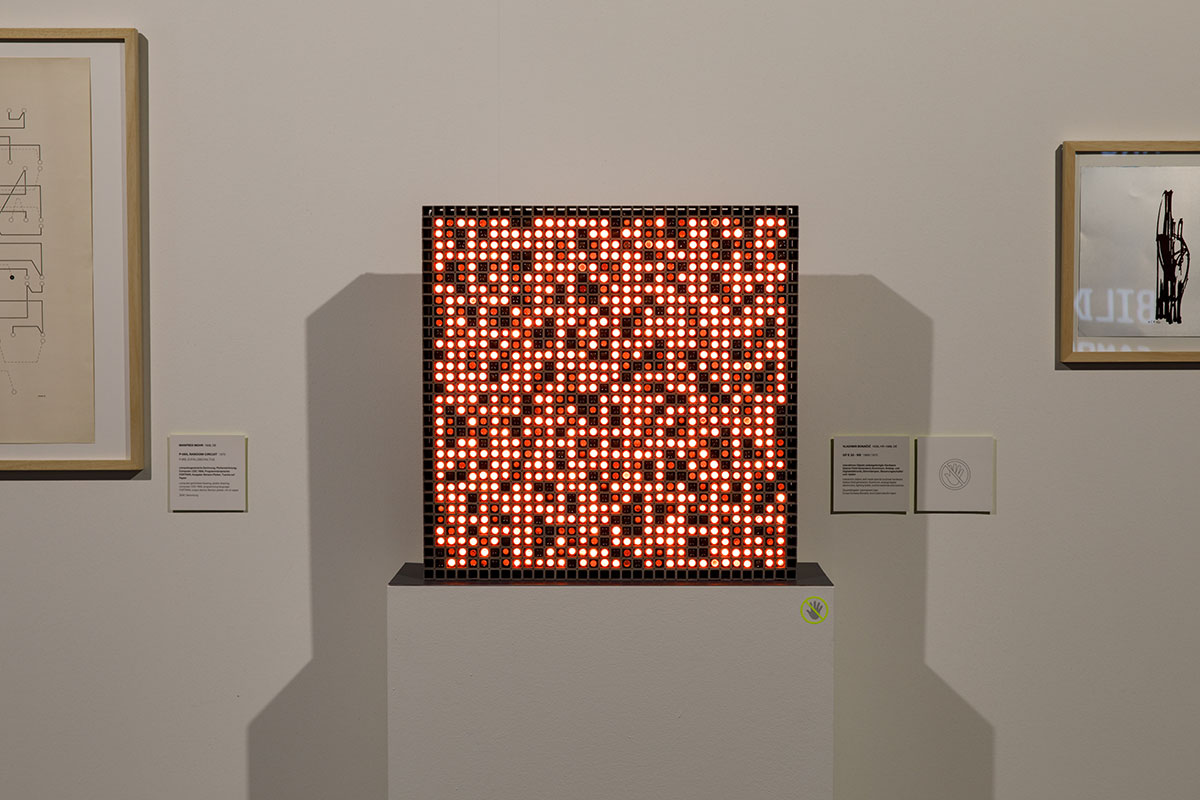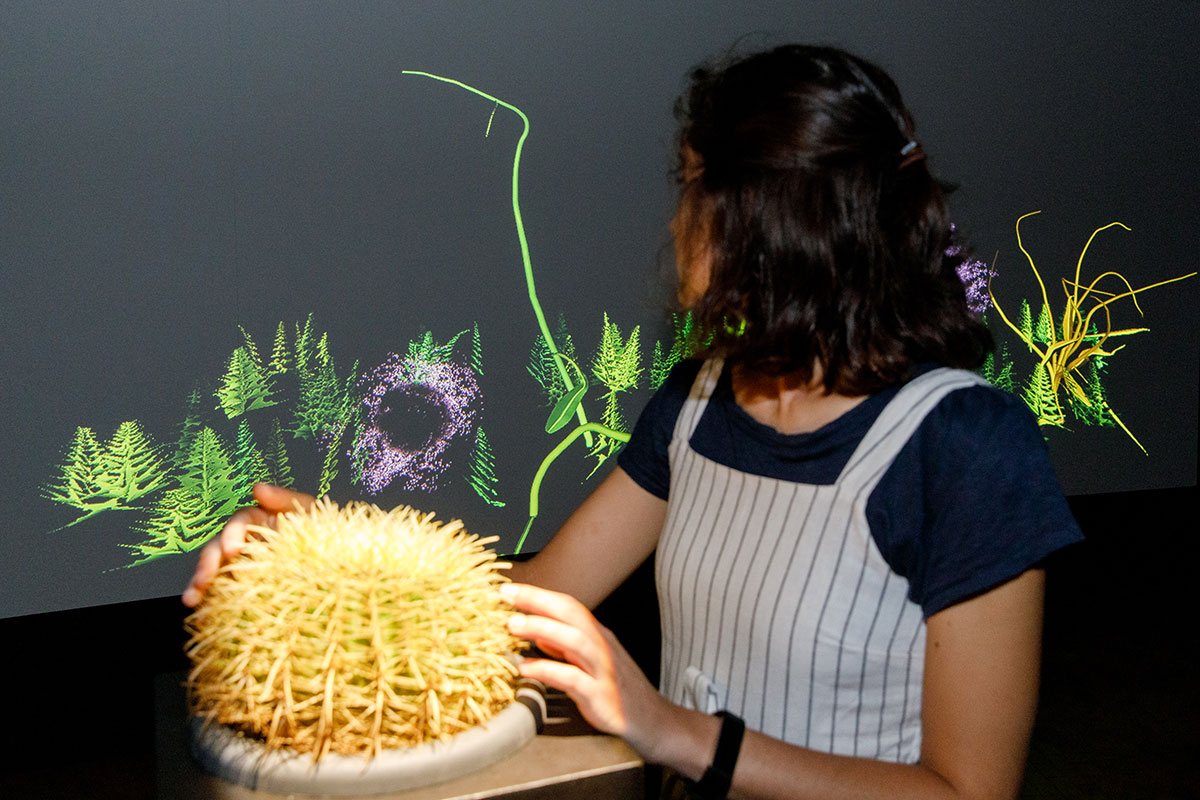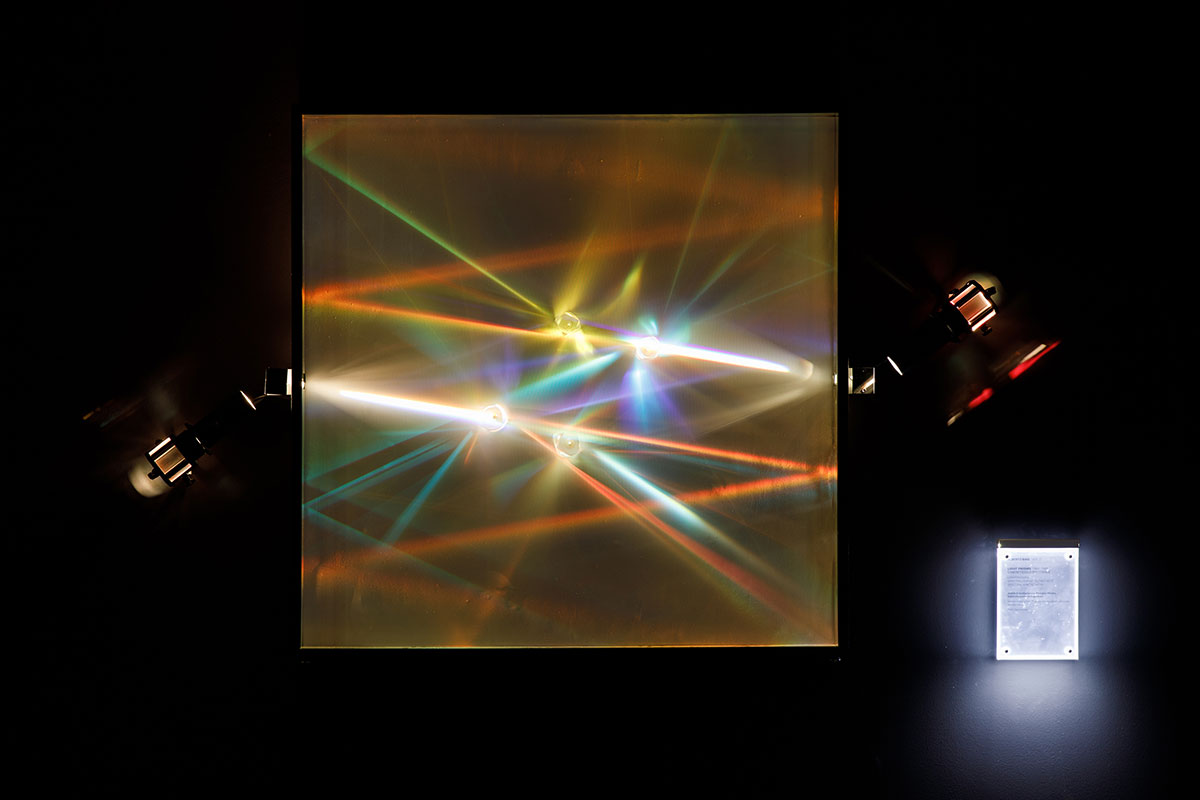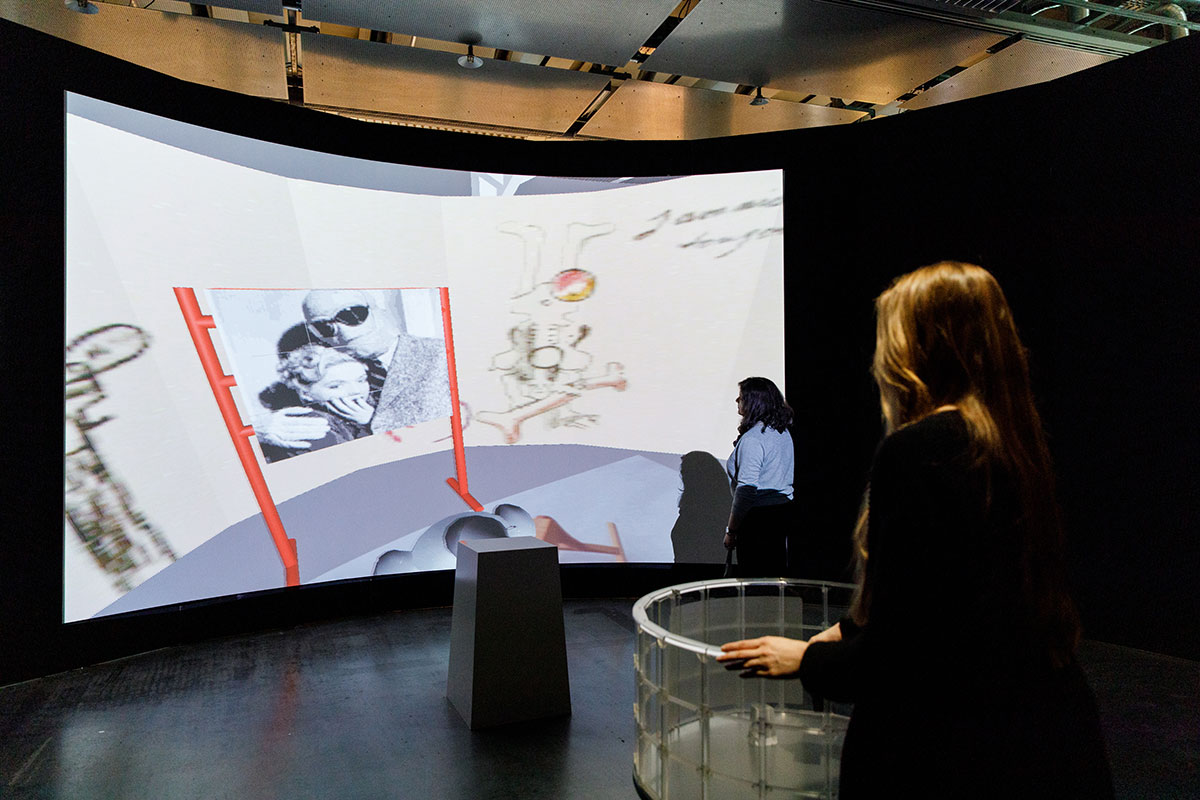PRESENTATION: Writing the History of the Future
 In the 20th century technical media radically transformed the image. Photography, film, phonography, radio, television, video, computers, and the Internet have redefined the relationship between artist, work, and viewer as well as our notion of the creative act. The exhibition “Writing the History of the Future” exemplifies the transformation of art due to the changing technologies of production, reception, and distribution. It also shows how artists anticipate media and social practices that will only become self-evident for society in general years later. As the title of the exhibition says, they write the history of the future.
In the 20th century technical media radically transformed the image. Photography, film, phonography, radio, television, video, computers, and the Internet have redefined the relationship between artist, work, and viewer as well as our notion of the creative act. The exhibition “Writing the History of the Future” exemplifies the transformation of art due to the changing technologies of production, reception, and distribution. It also shows how artists anticipate media and social practices that will only become self-evident for society in general years later. As the title of the exhibition says, they write the history of the future.
By Dimitris Lempesis
Photo: ZKM Archive
The exhibition “Writing the History of the Future: The ZKM Collection” in addition to historic masterpieces from the ZKM’s unique collection of media art, the exhibition also includes works of currently much-discussed crypto art. The exhibition thus provides an up-to-date overview of the history of digital art from the 1960s to the present. The presentation of the ZKM collection, which represents a selection from over 9,500 works, is distinguished by its cross-genre staging. It shows the transformation of the genre portrait, the representation of the body, landscape, and architecture from painting to interactive computer installation. It shows the updating of the ancient medium of writing under the conditions of information technology as well as of art as a format for collective and individual memory. Thus the exhibition presents art that is radically contemporaneous—art in which artists reflect on the present using the technical media of their time. It offers a unique opportunity to gain a comprehensive overview of the actual development of art in the 20th century beyond painting and sculpture, with various larger and smaller scale installations as well as numerous incunabula of media art. Crypto Art: In 2014 it became possible to use blockchain technology to create one-off originals of digital artworks, so-called Non-Fungible Tokens (NFTs). Already in 2018, long before the spectacular sales of such works were fetching millions, the ZKM purchased its first NFTs. So far, only two museums in the world have opened their collections to this new art format that will have a lasting impact on the economy of art: the Museum of Applied Arts Vienna and the ZKM. Since early April this year selected examples of crypto art from the ZKM Collection as well as works on loan are presented in the exhibition Writing the History of the Future and on the screen of the ZKM Cube. The ZKM is particularly interested in on-chain NFTs: completely on-chain NFTs have all their media and metadata stored directly within their contracts, which give proof of ownership. This type of NFT is stored directly in the blockchain, or to be more precise, the code that generates the artwork. The exhibition thus features key works of generative on-chain art, including the first on-chain works: “Autoglyphs” (2019) by John Watkinson and Matt Hall, creators of the famous CryptoPunks. It is not mere coincidence that the exhibition presents topical crypto art alongside works by digital art pioneers of the 1960s: the younger generation of artists sees itself as belonging to the tradition of early generative art. During the temporary closure of the exhibition due to the pandemic, the time was used to install a further key historic work of media art. The installation “Dynamic Object GF.E 16.4 CNSM” by Vladimir Bonačić developed 1969–1971, is one of the first examples of using computer technology in the arts. The work visualizes, or rather “acousticizes” Galois field structures in the form of fascinatingly beautiful patterns of light and sound. Galois fields are a part of abstract algebra and only determinable in complex mathematical formulas. One important area of their application is cryptography. As in the 1960s portable and affordable universal computers were as scarce as color monitors, cybernetician Vladimir Bonačić constructed special hardware in order to make his vision of cybernetic art a reality. These artistic experiments, based on Bonačić’s research, were occasioned by the festival of computer art Tendencies 4: Computers and Visual Research, which was held in 1968 in Zagreb – at the same time as the London exhibition Cybernetic Serendipity.
Photo: Nam June Paik, Arche Noah, 1989, © ZKM | Center for Art and Media Karlsruhe, Photo: Polina Yakusheva
Info: Curators: Peter Weibel, Margit Rosen, Clara Runge, Philipp Ziegler, ZKM | Center for Art and Media, Lorenzstraße 19, Karlsruhe, Germany, Duration: 17/12/2021-3/4/2022, Days & Hours: Wed-Sun 11:00-17:00, https://zkm.de
